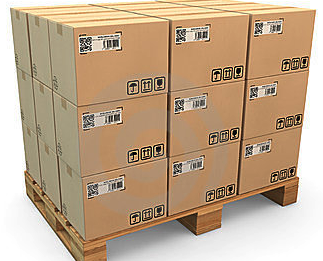-
13
Dec
CBOP – Cardboard Boxes on a Pallet

Here’s a novel LTL pricing concept for you. It’s called CBOP = Cardboard Boxes On a Pallet. If you ship product in cardboard boxes on pallets, density is by far the primary factor affecting LTL carrier cost. Freight class should simply be based upon the density with CBOP. Cardboard boxes on pallets represent the majority of freight tendered to LTL carriers; the vast majority with some carriers.
And if the carrier is willing to honor accurate shipper weights and dimensions even when minor differences are found, voila, the quote always matches the invoice. How neat is that! Heck, the carrier could even offer a financial incentive for submitting Electronic Bills of Lading (EBOLs) with accurate data so that everyone wins.
No longer would you need a Ph.D. in Classification Science to determine your product class. No longer would you need to know if your widgets are made of plastic or aluminum, or if they are intended for commercial or household purposes. This CBOP program eliminates all the frustrating proxies for density that you find in the NMFC today.
Just look at the most-recent changes made to the NMFC guide last week. Dehydrated or dried (powdered) cheese products that are 100% cheese are now considered “Cheese Food” and are CL70. But cheese products containing other items like flour and salt (sorry Cheez-It) are “Snack Foods” and classed CL60 to CL400 based upon density. But guess what, whether you ship Cheese Food or Cheese Snacks, or both, you are probably shipping in cardboard boxes on pallets. Why does determining the class have to be so darned complicated? Why can’t we class freight based upon actual profile variables like weight and dimensions instead of poor proxies like material content and usage. Why do we need a committee to study density profiles based upon the preponderance of cheese?
There are hundreds of NMF items that apply to stuff you find on the shelf in your local grocery store. It is a cornucopia of classes. Each of those items were shipped to the store in a cardboard box on a pallet. Does it matter if it is strawberry jelly versus Jell-o pudding, or Captain Crunch versus creamed corn? Just class it off the density which is readily computed from weight and dimensions.
Why would an LTL carrier not want to roll out a program like this? Would it not be a major win? Everyone gets a simple structure with less confusion and fewer disputes. Carrier gets accurate data they need to optimize their operation and ensure the right revenue 100% of the time. Shipper gets invoices that match expectations. Etc, etc. Heck, you could extend this program to cover packaging types like crates. Just bump the class if any dimension is unfavorable. Sure, value of product and liability can be a concern, but carriers limit liability quite a bit these days.
Is the industry ready for something like this that could potentially un-complicate a large swathe of the LTL market? And maybe lead to un-complicating the rest?
- (479) 461-1672
- Contact Us
